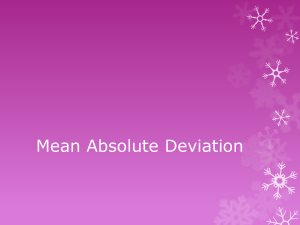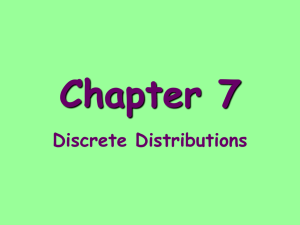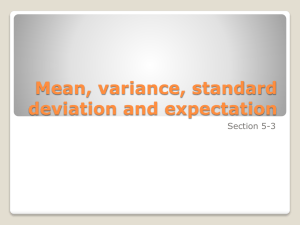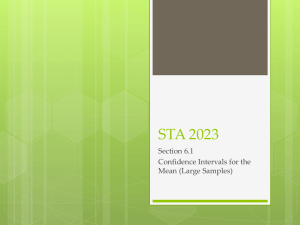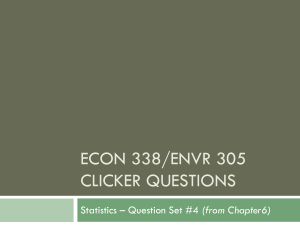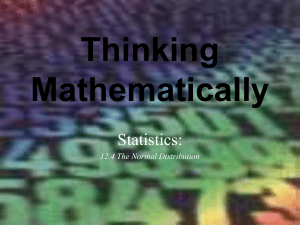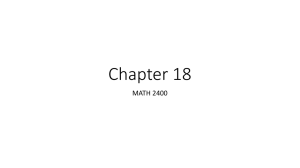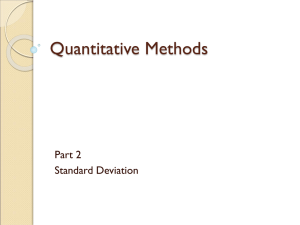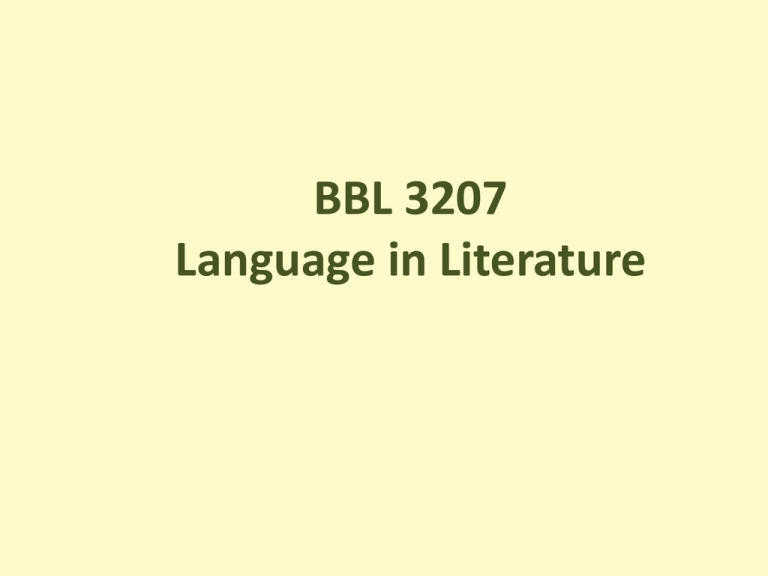
BBL 3207
Language in Literature
What is literature?
• Literature, as an art, is surely to arouse “the
excitement of emotion for the purpose of
immediate pleasure, through the medium of
beauty” (Coleridge 365).
• Tung (2007): “verbal artfulness” - proper
choice and good arrangement of all linguistic
components (phonological, morphological,
syntactical, semantic, and pragmatic).
Habitualisation
• " Art exists to help us recover the sensation of life; it
exists to make us feel things, to make the
stone stony. The end of art is to give a sensation of
the object as seen, not as recognized.“ Shklovsky
• The technique of art is to make things "unfamiliar,"
to make forms obscure, so as to increase the
difficulty and the duration of perception.
• The act of perception in art is an end in itself and
must be prolonged. In art, it is our experience of the
process of construction that counts, not the finished
product.
Habitualisation and defamiliarisation
• Habitualisation is a basic tendency in the psychology
of perception.
• If experience is habitual, perception becomes
automatic and uncritical.
• As for language, meanings become firmly established
in the minds of members of a society in so far as they
are coded in conventional, often used, and familiar
forms of expression.
• Habitualisation is staleness of thought of language.
Habitualisation and defamiliarisation
• Verbal art, employs uses of language which
‘defamiliarize’ experience, restoring freshness
and critical alertness.
• How can language and literature promote
defamiliarisation?
An influential school of
literary criticism in Russia
from the 1910s - 1930s.
What is ‘literariness’
• Russian Formalists – “defamiliarisation”: deviating
from and distorting “practical language”.
• Mukarovsky – “the function of poetic language
consists in the maximum of foregrounding of the
utterance”
– “foregrounding” opposite of “automatisation” (related
to defamiliarisation i.e. to estrange something is to
foreground it
Foregrounding
• Uses a visual metaphor to explain a linguistic
technique.
• In painting, this would be any device-contrast
of hue or lightness, greater detail or linear
precision, ..or whatever which causes some
part of a composition to be perceived as
standing out as a figure against a less
determinate background.
Foregrounding
foreground (noun)
1. The part of a scene or
picture that is nearest to
and in front of the
viewer. (opposed to
background).
2.a prominent or
important position;
forefront.
Foregrounding
• The notion of foregrounding, a term
borrowed from the Prague School of
Linguistics, is used by Leech and Short (1981:
48) to refer to ‘artistically motivated
deviation’.
• It refers to the range of stylistic effects that
occur in literature, whether at the phonetic
level (e.g., alliteration, rhyme), the
grammatical level (e.g., inversion, ellipsis), or
the semantic level (e.g., metaphor, irony).
What is foregrounded in language?
• In poetic language foregrounding achieves maximum
intensity to the extent of pushing communication into
the background as the objective of expression and of
being used for its own sake; it is not used in the services
of communication, but in order to place in the
foreground the act of expression, the act of speech itself.
(Mukarovsky, Standard Language and Poetic Language,
p.19)
The act of perception in art is an
end in itself and must be prolonged.
In art, it is our experience of the
process
of
construction
that
counts, not the finished product.
Foregrounding
• Foregrounding may occur in normal, everyday
language, (e.g. spoken discourse, journalistic
prose), but it occurs at random with no
systematic design.
• In literary texts, on the other hand,
foregrounding is structured: it tends to be
both systematic and hierarchical.
• That is, similar features may recur, such as a
pattern of assonance or a related group of
metaphors (Mukarovský, 1964, p. 20)
Foregrounding
• the deautomatisation of an act
• the more an act is automatised, the less it is
consciously executed; the more it is
foregrounded, the more completely conscious
does it become.
• The immediate effect of foregrounding is to
make strange (ostranenie), to achieve
defamiliarisation.
Foregrounding
• Shklovsky saw defamiliarization as accompanied by
feeling: stylistic devices in literary texts "emphasize
the emotional effect of an expression" (Shklovsky,
1917/1965, p. 9).
• Mukarovský : "When used poetically, words and
groups of words evoke a greater richness of images
and feelings than if they were to occur in a
communicative utterance" (1977, p. 73).
• Miall and Kuiken (1994): stylistic variation that
evokes feelings and prolong reading time
One of the first places Julia always ran to when
they arrived in G--- was The Dark Walk. It is a
laurel walk, very old, almost gone wild, a lofty
midnight tunnel of smooth, sinewy branches.
Underfoot the tough brown leaves are never
dry enough to crackle: there is always a
suggestion of damp and cool trickle.
She raced right into it.
(“The Trout,” by Sean O'Faoláin (1980-82)
Foregrounding effects:
• the unusual abbreviation of the name, “G---”;
• alliteration of /n/, /l/, /s/;
• the metaphoric use of “midnight” and
“sinewy”
• the consonance in the third sentence of
“crackle” and “trickle.”
When sentences such as these contain a cluster of foregrounded
features at the phonetic or semantic level or both they solicit a
certain kind of attention from readers: as our studies have shown,
most readers agree that such a passage is striking and evocative
1. The novel linguistic features strike readers as
interesting and capture their attention
(defamiliarisation per se).
2. Defamiliarisation obliges the reader to slow down,
allowing time for the feelings created by the
alliterations and metaphors to emerge.
3. These feelings guide formulation of an enriched
perspective on the Dark Walk.
Readers whom we have asked to talk about their
responses to this segment frequently found this
passage striking (e.g., ‘very beautiful’), mentioned
specific feelings (e.g., ‘foreboding’), and developed
novel perspectives on the Dark Walk (e.g.,
‘something that’s not of this world’). Miall
Devices of Foregrounding
• Outside literature, language tends to be
automatized; its structures and meanings are
used routinely.
• Within literature, however, this is opposed by
devices which thwart the automatism with
which language is read, processed, or
understood.
• Generally, two such devices may be
distinguished, deviation and parallelism.
17
• Foregrounding is realized by linguistic
deviation and linguistic parallelism.
Foregrounding
Deviation
Parallelism
The Realization of Foregrounding (Leech)
Deviation
• A phenomenon when a set of rules or expectations are
broken in some way. Such as when this font has just
changed. This deviation from expectation produces the
effect of foregrounding, which attracts attention and
aids memorability.
• Result: some degree of surprise in the reader, and his /
her attention is thereby drawn to the form of the text
itself (rather than to its content).
• Various levels of deviation:
1.
lexical deviation
2.
grammatical deviation
3.
phonological deviation
4.
graphological deviation
5.
semantic deviation
6.
dialectal deviation
7.
deviation of register and deviation of historical
period.
Lexical Deviation
• The coining of entirely new words (neologism)
When he awakened under the wire, he did not feel as though he had
just cranched. Even though it was the second cranching within the
week, he felt fit (Cordwainer Smith 1950).
The prefix fore is applied to verbs like ‘see’ and ‘tell’. (“beforehand”
T.S. Eliot uses the term ‘foresuffer’ in his The Waste Land
‘And I Tiresias have foresuffered all’
*not just a new word but the encapsulation of a newly
formulated idea - it is possible to anticipate mystically the
suffering of the future, just like ‘foresee’ or ‘foretell’
Lexical deviation
• In stylistics lexical deviation refers to a new word or
expression or a new meaning for an old word used
on only particular occasion.
• Sometimes a writer intends to reach certain kind of
rhetorical effect, so he will invent some new words
based on the rules of word-formation. But these
new words are seldom or hardly used on other
occasions.
• That means in literature, some invented new words
are only used by the inventor himself. Surely these
nonce-formations (words invented for special
purpose) bring about certain stylistic effect and
greatly improve the power of newness and
expression of the language.
Lexical deviation
“Don’t be such a harsh parent, father!”
“Don’t father me!”
— H. G. Wells
I was explaining the Golden Bull to his Royal
Highness, “I’ll Golden Bull you, you
rascal!”roared the Majesty of Prussia.
— Macaulay
Lexical Deviation
• The most common processes of word-formation are
affixation
the widow-making unchildring unfathering deeps
(Hopkin’s ‘The wreck of the Deutschland’)
un- = ‘take off/away from’ (i.e. unleash, unfrock, unhorse)
Possible cognitive meaning:
‘the deeps which deprive (wives) of husbands, (children) of fathers,
and (parents) of children’
Tragic happenings connected with the sea
Perhaps implies the wish to recognise a concept or property which the
language can so far only express by phrasal or clausal description
Attribute to the inseparable sea properties (“wetness”, “blueness”,
“saltness”)
Rarely classify aspects of universe by their tendency to make people
into widows (compare to “cloth-making”) - odd
Lexical Deviation
• Functional conversion of word class – adapting an
item to a new grammatical function without
changing its form
Let him easter in us
[The Wreck of the Deutschland]
The just man justices
[As King fishers Catch Fire]
The achieve of, the mastery of the thing
[The Windhover]
Lexical deviation
There was a balconyful of gentlemen.
— Chesterton
We left the town refreshed and rehatted.
— Fotherhill
They were else-minded then, altogether, the
men.
— Hopkins
Lexical deviation
• Usually associated with neologism (invention of new
‘words’)
• We call new words NONCE-FORMATIONS if they are
made up ‘for the nonce’, i.e., for a single occasion
only, rather than serious attempts to augment the
wordstock for some new need.
Phonological deviation
Phonological irregularities
1.1 Omission
i. Aphesis – the omission of an initial part (unstressed
vowel)
‘mid amid; ‘lone alone
ii. Syncope – the omission of a medial part of a word.
ne’er never; o’er over
iii. Apocope – the omission of a final part of a word
a’ all; wi’ with; o’ of; oft often
• They are conventional licenses of verse composition.
• They change the pronunciations of the original words
so that the poet may better and more easily arrange
sound patterns to achieve their intended
communicative effects.
• Poetic license is a writer’s privilege to depart from
some expected standard.
Till a’ the seas gang dry, my dear,
And the rocks melt wi’ the sun:
I will luve thee still, my dear,
While the sands o’ life shall run.
(Robert Burns, A Red, Red Rose)
1.2 Mispronunciation and Sub-standard
Pronunciation
• Intentional mispronunciation and substandard pronunciation
• Purpose: vividly describe a character. True to
life
Dickens, Oliver Twist: depiction of Gamfield
'That's acause they damped the straw afore they lit it in the
chimbley to make 'em come down again,' said Gamfield; 'that's
all smoke, and no blaze; vereas smoke ain't o' no use at all in
making a boy come down, for it only sinds him to sleep, and
that's wot he likes. Boys is wery obstinit, and wery lazy,
Gen'l'men, and there's nothink like a good hot blaze to make
'em come down vith a run. It's humane too, gen'l'men, acause,
even if they've stuck in the chimbley, roasting their feet makes
'em struggle to hextricate theirselves.‘
Mispronunciation and Sub-standard
Pronunciation
May God starve ye yet,” yelled an old Irish woman
who now threw open a nearby window and stuck out
her head.
“Yes, and you,” she added, catching the eye of one
of the policemen. “You bloody murthering thafe!
rack my son over the head, will, you hard-hearted,
muthering divil? Ah, ye —”
—Sister Carrie by T. Dreiser
The way of speaking reveals that the speaker is a
working-class woman.
Mispronunciation and Sub-standard
Pronunciation
May God starve ye yet,” yelled an old Irish woman
who now threw open a nearby window and stuck out
her head.
“Yes, and you,” she added, catching the eye of one
of the policemen. “You bloody murthering thafe!
rack my son over the head, will, you hard-hearted,
muthering divil? Ah, ye —”
—Sister Carrie by T. Dreiser
What is the function of the deviant phonological
features?
What does her accent tell us about the old woman?
1.3 Special Pronunciation
• Purpose: convenience of rhyming
The trumpet of a prophecy! O, Wind,
If winter comes, can spring be far behind?
(P.B. Shelley, Ode to the West Wind)
Graphological Deviation
• Related to type of print, grammetrics,
punctuation, indentation, etc.
• Graphology: the encoding of meaning in visual
symbols.
Graphological Deviation
2.1 Shape of Text
• Design of the shape of a text in an unconventional way:
suggestive of a certain literary theme.
• R. Draper, Target Practice
• The poem is shaped like a bull’s eye or target with a series of
concentric circles.
• Each circle from the outside to the inside represents a
progression in the degree of seriousness of injury.
• Uniqueness and originality
2.2 Type of Print
• italics, bold print, capitalization and decapitalization,
etc.
• E. E. Cumming, Me up at does
Me up at does
out of the floor
quietly Stare
a poisoned mouse
still who alive
is asking What
have i done that
You wouldn’t have
• The first letter of each
line should be capitalised.
• Cummings breaches the
convention by capitalising
the first letter of the
opening line and that of
the closing line so that
the two words Me and
You stand out and
become stylistically
prominent
Me up at does
out of the floor
quietly Stare
a poisoned mouse
still who alive
is asking What
have i done that
You wouldn’t have
• What do Me and You
refer to?
• The poet may intend to
have the reader see that
the addresser (Me and
You) considered himself
to be superior to the
mouse
• Since i is the self-address of the mouse, the
decapitalisation may demonstrate that the mouse wishes
to show its humbleness.
• You on the other hand, manifests that the mouse pays
much respect to the addresser (the human being i.e.
Me), at least outwardly.
2.3 Grammetrics
• Grammetrics: the
ways in which
grammatical units are
fitted into metrical
units such as lines
and stanzas.
This Is Just To Say
by William Carlos Williams
I have eaten
the plums
that were in
the icebox
and which
you were probably
saving
for breakfast
Forgive me
they were delicious
so sweet
and so cold
2.3 Grammetrics
• The title of the poem
does not stand on its
own main clause of
the first sentence which
runs over the first two
stanzas of the poem.
• This may show that the
poet intends the poem
to be read as a whole
and places emphasis on
the unity of the
discourse.
This Is Just To Say
by William Carlos Williams
I have eaten
the plums
that were in
the icebox
and which
you were probably
saving
for breakfast
Forgive me
they were delicious
so sweet
and so cold
• Every line of the poem
creates a pulling-forward
effect (CLASS TASK)
• L1: The verb eat can take
an object or not; the
absence of punctuation
at the end of the line
makes us expect one.
• L2: expectation is
satisfied. But a new
expectation is aroused
with the presence of the
definite article the
This Is Just To Say
by William Carlos Williams
I have eaten
the plums
that were in
the icebox
and which
you were probably
saving
for breakfast
Forgive me
they were delicious
so sweet
and so cold
• The cataphoric reference
since plums was not mentioned
previously in the poem.
• This indicates the specific
reference is contained in the
following context.
• L3: a clause that modifies the
plums, but not finished. After in
one would expect from the
context some kind of locative in
the next line
• L4: expectation fulfilled; the
absence of punctuation at the
end of line (also stanza) gives a
sense of incompleteness
This Is Just To Say
by William Carlos Williams
I have eaten
the plums
that were in
the icebox
and which
you were probably
saving
for breakfast
Forgive me
they were delicious
so sweet
and so cold
• L5: which indicates a new
clause. We would naturally
move on to find out what
follows which and what which
refers to exactly.
• L6: sense of incompletenes.
Most likely a main verb in ‘ing’
from will follow.
• L7: expectation fulfilled; but
saving suggests the plums are
either ‘for someone’ or ‘for
some occasion’.
• L8: missing full stop at the end
of line – sentence not finished
This Is Just To Say
by William Carlos Williams
I have eaten
the plums
that were in
the icebox
and which
you were probably
saving
for breakfast
Forgive me
they were delicious
so sweet
and so cold
• L9: the capitalisation of 1st
letter indicates a new sentence.
• Last Stanza: Slowing down of
pace no more syntactic
expectation. We read on
because we know from the
absence of punctuation that
the poem is not finished, and
we realise from the context
that there may be more
interesting things to be read.
This Is Just To Say
by William Carlos Williams
I have eaten
the plums
that were in
the icebox
and which
you were probably
saving
for breakfast
Forgive me
they were delicious
so sweet
and so cold
How do we explain what we have
observed then?
This Is Just To Say
by William Carlos Williams
The overall pulling-forward effect
brings great immediacy to the
sensuous experience being
described in the poem.
It is also intended to make the
reader actively involve himself in
reading the poem, and read it
with great interest and pleasure.
I have eaten
the plums
that were in
the icebox
and which
you were probably
saving
for breakfast
Forgive me
they were delicious
so sweet
and so cold
The contrast in pace between the
two stanzas and the last stanza is
of even greater significance.
Title+the 2 stanzas constantly
arousing syntactic expectations
from readers; giving great
immediacy to what is being
described.
Last stanza slowing down of
the pace; allows reader to share
the taste of the plums in a
leisurely manner with the speaker
I, thus showing that he lays great
emphasis on immediate sensuous
experience
This Is Just To Say
by William Carlos Williams
I have eaten
the plums
that were in
the icebox
and which
you were probably
saving
for breakfast
Forgive me
they were delicious
so sweet
and so cold
Syntactic Deviation
• Syntactic deviation refers to departures from normal
(surface) grammar. These include a number of
features such as unsual clause
Syntactic Deviation
• Poet disregards the rules of sentence
i. fastened me flesh
ii. A grief ago (Dylan Thomas)
iii. “the achieve of, the mastery of the things” (Hopkins, the
Windhover)
• Two types of grammatical deviation are morphological and
syntactic deviations.
• Examples of morphological deviation are museyroom,
eggtentical, and intellible in James Joyce’s Finnegan’s Wake.
• She dwelt among the untrodden ways (Wordsworth)
Morphological Deviation
• Involves adding affixes to words which they
would not usually have, or removing their
‘usual’ affixes;
• Breaking words up into their constituent
morphemes, or running several words
together so they appear as one long word
Morphological Deviation
a billion brains may coax undeath
from fancied fact and spaceful time
(e.e. cummings 1960)
coldtonguecoldhamcoldbeefpickledgherkinssaladfrenchrollsc
resssandwichepottedmeatgingerbeerlemonadesoda water
(Kenneth Grahame 1908)
Syntactic Deviation
• In syntax, deviations might be 1) bad or
incorrect grammar and 2) syntactic
rearrangement/ hyperbaton.
• The examples are:
– I doesn’t like him.
– I know not
– Saw you anything?
– He me saw.
Syntactic Deviation
Me up at does
out of the floor
quietly Stare
a poisoned mouse
still who alive
is asking What
have i done that
You wouldn’t have
• Revise the poem so that
it will be more
grammatical.
A poisoned mouse who,
still alive, is asking 'What
have I done that you
wouldn't have?' stares
quietly up at me.
Syntactic Deviation
Me up at does
out of the floor
quietly Stare
a poisoned mouse
still who alive
is asking What
have i done that
You wouldn’t have
• The disrupted grammar
of the 1st part of poem - a
kind of grammatical
symbolism - it helps to
represent the disjointed,
uncomfortable effect on
the persona of the poem,
who has found the dying
mouse (which
presumably, was
poisoned).
• Reminding us of the guilt we have if we kill pests in this way.
• The use of the personifying pronoun 'who' instead of 'that‘, and the
fact that the mouse is presented as asking a rhetorical question of
the persona equates the mouse and the persona).
Syntactic Deviation
Me up at does
out of the floor
quietly Stare
a poisoned mouse
still who alive
is asking What
have i done that
You wouldn’t have
• The last three lines of the
poem are not
grammatically disrupted
we can see the force of
the mouse's rhetorical
question straightforwardly,
and thus sympathise with
its viewpoint.
• Present tense helps
make the situation seem
more dramatic and vivid.
Semantic deviation
• Tranference of meaning
• phrase containing a word whose meaning violates
the expectations created by the surrounding words
e.g., “a grief ago” (expect a temporal noun)
“in the room so loud to my own” (expect a spatial
adjective)
The Wanderer
There head falls forward, fatigued at evening,
And dreams of home,
Waving from window, spread of welcome,
Kissing of wife under single sheet,
But waking sees
Bird-flocks nameless to him, through doorway voices
Of new men making another love.
• These seem to have the function of impressionistically
evoking psychological state.
• In “The Wanderer” Auden evolves a subjectless, articleless
style which apparently suggests the exile’s loss of a sense of
identity and of a coordinated view of life.
Semantic Deviation
1. Simile - describes one thing as another using
such words “like” or “as”. Simile also has the
power of making language visual and vivid.
Laura’s separation increases till she is like a piece of her
own glass collection, too exquisitely fragile to move
from the shelf. (Glass Menagerie, 161)
Semantic Deviation
• Semantic deviation can be meant as ‘nonsense’ or ‘absurdity’, so long as we realize that
sense is used, in this context, in a strictly
literal minded way.
• The child is father of the man. (Wordsworth’s My
Heart Leaps Up)
• She was a phantom of delight (Shakespeare)
• Beauty is truth, truth beauty (Keats)
Semantic Deviation
Meaning
relations which
are logically
inconsistent or
paradoxical in
some way Metaphor
Years have gone by
still
I see your tearful eyes
and catch the choking moans
coming from the crumbling pyramid
of pains.
When
dawn is dimmed
amidst dull clouds
and shroud is spread
on my despair
your name emanates
in pleasing designs.
(Stephen Gill, To Mother)
Semantic Deviation
• The semantic
deviation is
caused by the
association of
words having
opposite
features
Years have gone by
still
I see your tearful eyes
and catch the choking moans
coming from the crumbling pyramid
of pains.
When
dawn is dimmed
amidst dull clouds
and shroud is spread
on my despair
your name emanates
in pleasing designs.
(Stephen Gill, To Mother)
Semantic Deviation
• The vast structure of
pyramids is razed with
harsh, grating noise, so
death wrings the soul
out of body with
ineffable pain.
• Shroud typifies the pall
of death over despair
and it connotes that
bereft of mother's
affectionate prop the
poet presumes himself
to be a breathing
corpse.
Years have gone by
still
I see your tearful eyes
and catch the choking moans
coming from the crumbling pyramid
of pains.
When
dawn is dimmed
amidst dull clouds
and shroud is spread
on my despair
your name emanates
in pleasing designs.
(Stephen Gill, To Mother)
Semantic Deviation
• This describes relations that are logically
inconsistent or paradoxical in some way.
• For example, it is normally assumed that any
modifiers of a noun will be semantically
compatible: 'The meat pie', or 'the crusty pie',
but not 'the irritable pie'.
• This sort of deviation may prompt the reader
to look beyond the dictionary definition of the
words in order to interpret the text.
Examples of Deviation
e. g:
neologism - “monomyth”, “quark” (Joyce’s Finnegan’s Wake)
live metaphor -
"The fog comes
on little cat feet.
It sits looking
over harbor and city
on silent haunches
and then moves on."
(Carl Sandburg’s the Fog)
ungrammatical sentences – “he sang his didn't he danced his did”
(Cumming’s anyone lived in a
pretty how town)
oxymoron - “Beautiful tyrant”
“Honourable villain”
(Shakespeare’s Romeo and Juliet)
Parallelism
• A rhetorical device characterised by overregularity or repetitive
structures
e.g: rhyme, assonance, alliteration, meter, semantic symmetry, or
antistrophe.
Because I do not hope to turn again
Because I do not hope
Because I do not hope to turn....
T. S. Eliot's "Ash-Wednesday“
I looked upon the rotting sea,
And drew my eyes away;
I looked upon the rotting deck,
And there the dead men lay.
Coleridge’s “Rime of the Ancient Mariner”
Deviation
Foregrounding
Overregularity
Phonology Graphology lexicon Grammar Meaning
Realization
Form
Semantics
Language
The Realization of Foregrounding
Levels of Analysis
• If we want to examine language in a given text, there are
different aspects of language structure which need separate
consideration.
Levels of language
The sound of language; how words are
pronounced
The patterns and the shape of written language
The way words are constructed
The way words combine with other words
The words used
The meaning of words and sentences
The way words and sentences are used in
everyday situations
Areas of Language Study
Phonology, phonetics
Graphology
Morphology
Grammar
Vocabulary
Semantics
Pragmatics
1. The sound level
•
•
•
•
•
Phonemes
Rhyme
Rhythm
Alliteration
Assonance
1. The sound level
Forms of sound patterning
•
•
•
•
•
Phonemes
Rhyme
Alliteration
Assonance
Consonance
70
Phonemes
• A phoneme is the smallest phonetic unit in a
language that is capable of conveying a
distinction in meaning. In other words,
phonemes are sounds that differentiate one
word from another (e.g. /hat/ vs. /hot/ or
/mat/).
Rhyme
• the repetition of identical sound combination of
words.
• usually placed at the end of the corresponding lines
in verse.
|Humpty |Dumpty |sat on a |wall
|Humpty |Dumpty |had a great |fall
|All the king’s |horses and |all the king’s |men
|Couldn’t put |Humpty to|gether a|gain
END RHYME
• A word at the end of one line rhymes with a
word at the end of another line
Hector the Collector
Collected bits of string.
Collected dolls with broken heads
And rusty bells that would not ring.
INTERNAL RHYME
• A word inside a line rhymes with another
word on the same line.
Once upon a midnight dreary, while I
pondered weak and weary.
From “The Raven”
by Edgar Allan Poe
Types of rhyme
1. Full rhyme
2. Incomplete rhyme
3. Consonance
4. Assonance
Full rhyme
• Sometimes known as perfect,
true or exact rhyme.
• The stressed vowels and all
following consonants and
vowels are identical, but the
consonants preceding the
rhyming vowels are different
e.g. chain, drain; soul, mole.
Incomplete rhyme
• Also known as half-rhymes, which are not exact repetitions
but are close enough to resonate e.g. supper, blubber; sane,
maintain; dangerous, hostages.
NEAR RHYME
• a.k.a imperfect rhyme,
close rhyme
• The words share EITHER
the same vowel or
consonant sound BUT
NOT BOTH
ROSE
LOSE
Different vowel sounds
(long “o” and “oo”
sound)
Share the same
consonant sound
RHYME SCHEME
• A rhyme scheme is a pattern of rhyme (usually end
rhyme, but not always).
• Use the letters of the alphabet to represent sounds
to be able to visually “see” the pattern. (See next
slide for an example.)
SAMPLE RHYME SCHEME
The Germ by Ogden Nash
A mighty creature is the germ,
Though smaller than the pachyderm.
His customary dwelling place
Is deep within the human race.
His childish pride he often pleases
By giving people strange diseases.
Do you, my poppet, feel infirm?
You probably contain a germ.
a
a
b
b
c
c
a
a
Assonance
• Repetition of vowel sounds to create internal
rhyming within phrases or sentences
• vowel rhymes, rhyme on the final vowel sound, but
the final consonance sound is different, e.g. flesh,
fresh, press (“e”); wine, life (“i”); head, said (“e”);
tries, side (“i”);
• Hear the mellow wedding bells. (Poe)
• And murmuring of innumerable bees (Tennyson)
• The crumbling thunder of seas (Stevenson)
Consonance
• The repetition of two or more consonants using different
vowels within words.
• Consonant rhymes, rhyme on the final consonant sound but
the final vowel sound is different, e.g. blank, think (“nk”);
man, wind (“n”); wants, cards (“a”); aim, brim (“m”); work,
hurt (“r”); flung, long; tale, tool
– And the silken sad uncertain rustling of each
purple curtain (Poe)
– Rap rejects my tape deck, ejects projectile /
Whether jew or gentile I rank top percentile.
(Hip-hop music)
Rhythm
• The regular periodic beat.
• “a unit which is usually larger than the syllable, and which
contains one stressed syllable, marking the recurrent beat,
and optionally, a number of unstressed syllables” (Leech
(1969): 105).
• It may involve a succession of weak and strong stress; long
and short; high and low and other contrasting segments of
utterance. Rhythm can occur in prose as well as in verse.
Meter
• Meter is a type of rhythm of accented and unaccented
syllables organized into feet, aka patterns.
• It is determined by the character and number of syllables in a
line. Meter is also dependent on the way the syllables are
accented.
Shall I compare thee to a summer’s day?
(Shakespeare’s “Sonnet 18”)
• The above line consists of ten syllables that show a pattern of unstressed
and stressed syllables: 1st syllable unstressed, 2nd syllable stressed, 3rd
syllable unstressed…. 10th syllable. The unstressed syllable is underlined
while the stressed syllable is in bold (Cumming 2006).
Foot – stress patterning
• A foot is made up of a pair of unstressed and stressed
syllables. Thus, the above line altogether contains five feet (see
below):
1
2
3
4
5
Shall I..|.. compare |.. thee to..|.. a sum..|.. mer’s day?
5 types of Feet
Iamb
(Iambic)
Unstressed + Stressed
Trochee
(Trochaic)
Stressed + Unstressed
Spondee
(Spondaic)
Stressed + Stressed
Anapest
(Anapestic)
Dactyl
(Dactylic
"To be or not to be"
Two Syllables (Shakespeare’s
Hamlet)
"Double, double, toil
and trouble."
Two Syllables
(Shakespeare’s
Macbeth)
“heartbreak”
Two Syllables
"I arise and unbuild it
Unstressed + Unstressed +
Three Syllables again" (Shelley's
Stressed
Cloud)
“Openly”
Stressed + Unstressed +
Three Syllables
Unstressed
Meter depends on the type of foot and the number of feet in
a line. Below are the types of meter and the line length:
Monometer
Dimeter
Trimeter
Tetrameter
Pentameter
Hexameter
Heptameter
Octameter
One Foot
Two Feet
Three Feet
Four Feet
Five Feet
Six Feet
Seven Feet
Eight Feet
1
2
3
4
5
Shall I..|.. compare |.. thee to..|.. a sum..|.. mer’s day?
Practice:
Here's an example of how a line by Shakespeare
is divided into feet:
from FAIR | est CREA | tures WE | deSIRE |
inCREASE
Intimations of Immortality – Robert Frost
THERE was a time when meadow, grove, and stream,
The earth, and every common sight,
To me did seem
Apparell'd in celestial light,
The glory and the freshness of a dream.
It is not now as it hath been of yore;—
Turn wheresoe'er I may,
By night or day,
The things which I have seen I now can see no more.
A challenge for you……
• Write twenty lines of iambic pentameter. For
your first try, don't worry too much about
writing something beautiful or interesting. It's
OK to start with a very ordinary or silly line
like: "my NAME is SUSie JEAN and I don't
CARE." Just practice controlling your rhythm.
Alliteration
• The repetition of sound, usually consonant, at the
beginning of words.
Example:
• sweet smell of success, a dime a dozen, bigger and
better, jump for joy
• And sings a solitary song That whistles in the wind.
(Wordsworth)
Onomatopoeia
• a word that imitates the sound it represents
• Example:
splash, wow, gush, kerplunk
• Examples: Over the cobbles he clattered and clashed in the
dark inn-yard, / He tapped with his whip on the shutters, but
all was locked and barred; Tlot tlot, tlot tlot! Had they heard
it? The horse-hooves, ringing clear; / Tlot tlot, tlot tlot, in the
distance! Were they deaf that they did not hear?
("The Highwayman" by Alfred Noyes)
ONOMATOPOEIA
• Words that imitate the sound they are
naming
BUZZ
• OR sounds that imitate another sound
“The silken, sad, uncertain, rustling of
each purple curtain . . .”
2. Graphological Level
• Design, layout, spelling and lettering
• The typographical arrangement of words is as
important in conveying the intended effect
she loves me
she loves me not
she loves
she loves me
she
she loves
she
- Emmet Williams
3. Grammatical Level
• Grammar itself is also composed of a number
of levels.
Sentences
composed of one or more clauses (or
"simple sentences").
Clauses
composed of one or more phrases.
Phrases
Words
composed of one or more words.
3. Grammatical Level
1. SENTENCE TYPES. Does the author use only statements
(declarative sentences), or does he also use questions,
commands, exclamations. or minor sentence types such
as sentences with no verb)? If these other types are used,
what is their function?
2. SENTENCE COMPLEXITY. Do sentences on the whole
have a simple or a complex structure? What is the
average sentence length (in number of words)? What is
the ratio of dependent to independent clauses complexity
vary strikingly from one sentence to another? Is
complexity mainly due to (i) coordination, (ii)
subordination, (iii) parataxis (juxtaposition of clauses or
other equivalent structures)?
3 NOUN PHRASES. Are they relatively simple or complex?
Where does the complexity lie (in pre-modification by
adjectives, nouns, etc, or in post-modification by
prepositional phrases, relative clauses, etc)? Note
occurrence of listings (e.g sequences of adjectives
4 VERB PHRASES. Are there any significant departures
from the use of the simple past tense? For example,
notice occurrences and the functions of the present tense;
of the progressive aspect (e.g was lying); of the perfective
aspect (e.g. has/had appeared); modal auxiliaries (e.g can,
must, would).
5 OTHER PHRASE TYPES. Is there anything to be said
about other phrase types: prepositional phrases, adverb
phrases adjective phrases?
6 WORD CLASSES. Having already considered major or
lexical word classes, we may here consider minor word
classes (‘function words’): prepositions, conjunctions,
pronouns, determiners, auxiliaries, interjections. Are
particular words of these types used for particular effect
(eg the definite or indefinite article; first person pronouns
I, we, etc; demonstratives such as this and that; negative
words such as not, nothing, no) ?
7 GENERAL Note here whether any general types of
grammatical construction are used to special effect e.g.
comparative or superlative constructions; coordinative or
listing constructions; parenthetical constructions. Do lists
and co-ordinations (e.g. lists of nouns) tend to occur with
two, three or more than three members?
• Sentence structure:
– Single – a sentence with only one verb group
– Compound – sentences / clauses linked simply
(and, but)
– Complex – sentences where subordinate clauses
are bound together by more complex connectives
and punctuation
• Consider the sentence,
'The audience might like the play but I hate it'.
Using round brackets to indicate the phrases and
square brackets to indicate the clauses, we can show
the sentence's structure as follows:
[ ( The audience) ( might like ) ( the play ) ] [ but ( I ) (
hate ) ( it ) ]
The sentence thus consists of two coordinated clauses
(ie two simple sentences joined together as one
sentence). In the first clause each constituent phrase
consists of two words, and in the second clause each
phrase consists of one word.
• Identifying elements of simple sentences
functions of words and phrases in sentences:
subject, predicate, object, complement,
adverbial
Predicators consist of verb phrases (e.g. 'ate', 'had been eating',
'is', 'was being') which can be used to express tense
and aspect)
function as the centre of English sentences and
clauses, around which everything else revolves they
express actions (e.g. 'hit'), processes (e.g. 'changed',
'decided') and linking relations (e.g. 'is', 'seemed').
Predicators are the most obligatory of English
sentence constituents .
Subjects
consist of noun phrases (NPs) (e.g. 'a teacher', ‘Jason')
function as
the topic of the sentence, and the 'doer' of any action expressed,
subjects are the next most obligatory element after predicators
Examples Mary loves John, The exhausted student had been
running, John seems quiet
Objects
consist of noun phrases (NPs)
function as
the 'receiver' of any action expressed by the predicator, where
relevant and normally come immediately after that predicator
Examples Diane loves Mark, The exhausted officer had eaten all
his food, Joshua has the biggest ice cream
Complements consist of noun phrases (e.g. 'a student') or adjective phrases
(e.g. 'very happy') and normally come immediately after a linking
predicator (when they are subject complements) or an object (if
they are object complements) Complements are obligatory with
linking predicators
function as
the specification of some attribute or role of the subject (usually) or
the object (sometimes) of the sentence
Examples John is a student, The exhausted student is ill, Mary
made her mother very angry
Adverbials
consist of adverb phrases (AdvPs: e.g. 'soon', 'then' 'very quickly',
prepositional phrases (PPs: e.g. 'up the road', 'in a minute' or noun
phrases (e.g. 'last Tuesday', 'the day before last')
function as
the specification of a condition related to the predicator (e.g. when,
where or how the predicator process occurred), the most optional
and normally occur at the ends of clauses
Examples Then John walked up the road, The exhausted student
became ill last Thursday, Mary stupidly made her mother very
angry on her wedding anniversary
Lexical Level
• Word class:
– noun (N),
– verb (V),
– adjective (A)
– adverb (Adv).
Lexical categories
• Is the vocabulary simple or complex? formal or colloquial?
descriptive or evaluative? general or specific?
• How far does the writer make use of the emotive and other
associations of words, as opposed to their referential
meaning?
• Does the text contain idiomatic phrases, and if so, with
what kind of dialect or register? Are these idioms
associated?
• Is there any use of rare or specialized vocabulary? Are any
particular morphological categories noteworthy (e.g.
compound words, words with particular suffixes)? To what
semantic fields do words belong?
Lexical categories
a. Nouns-abstract society/idea, or concrete
house/cat? What kinds of abstract nouns
occur (referring to events war/eruption,
perceptions understanding/consciousness,
processes development, moral virtue or
social responsibility, qualities bravery)?
What use is made of proper names? Are
there any collective nouns people/staff?
• b. Adjective--referring to what attribute?
physical woolen, psychological joyful, visual
hilly square/snowy, auditory bubbling/sizzling,
sensory slippery/smooth, color dark/red,
referential big dog/white house, emotive
exited/happy, evaluative good/fat/ bad/lazy?
gradable young/tall/useful or non-gradable
atomic/British? attributive an utter fool or
predicative he is ashore ? restrictive the
exact answer? intensifying the simple truth/a
complete victory/a slight effort? stative
tall/long or dynamic abusive/ambitious?
c. Verbs –Are they stative cost/believe/remain, or
dynamic walk/arrive? Do they refer to
movements climb/jump/slide, physical acts
spread/smell/taste/laugh, or speech acts
persuade/decline/beg, psychological states or
activities think/feel/imagine/know/love. or
perceptions see/hear/feel? Are they transitive
shut the door, intransitive the door shuts, or
linking be/sound/seem/taste/ smell? Are they
factive know/regret/forget/
remember or non-factive believe /assume /consider
/suppose/think/imagine?
d. Adverbs —what semantic functions do they
perform?
manner anxiously/ carefully/ loudly/ willingly?
place away/along/across/upstairs/elsewhere?
direction backwards/forward/up/down/in/out?
time ago/already/finally/shortly/immediately?
degree almost/completely/partly/deeply/much?
Are there any significant use of sentence
adverbs?
1) adjuncts like happily, proudly, now, outside?
2) conjuncts like so, therefore, however?
3) disjuncts like certainly, obviously, frankly?
Words and Tropes: Transference of
Meaning
Words and Tropes: Transference of
Meaning
Literal language and figurative language
• Friends, Romans and
Countrymen, lend me your
ears…
Anthony in Shakespeare’s
Julius Caesar
Simile
O, my luve is like a red, red rose,
That’s newly sprung in June;
O, my luve is like the melodie
That’s sweetly play’d in tune.
Robert Burns
(1759-96)
112
Metaphor
All the world’s a stage,
And all the men and women merely players;
They have their exits and their entrances.
And one man in his time plays many parts,
His acts being seven ages …
William Shakespeare
(1564-1616)
Metonymy
There is no armour against fate;
Death lays his icy hand on kings;
Sceptre and Crown
Must tumble down
And in the dust be equal made
With the poor crooked Scythe and Spade.
James Shirley (1596-1666)
Analysis of Cummings’ poem
“in Just-”
•
•
•
1.
2.
3.
4.
5.
6.
7.
8.
9.
in Justspring
when the world is mudluscious the little
lame balloonman
whistles
far
and wee
and eddieandbill come
running from marbles and
piracies and it's
spring
• 10. when the world is puddle-wonderful
• 11. the queer
12. old balloonman whistles
13. far
and
wee
14. and bettyandisbel come dancing
• 15. from hop-scotch and jump-rope and
16. it's
17. spring
18. and
19.
the
• 20.
goat-footed
• 21. balloonMan
whistles
22. far
23. and
24. wee
i. Graphological Deviation
• The most striking in this poem is perhaps the fact
that there is no title. This may show that poet intends
the poem to be read as a whole and places emphasis
on the unity of the discourse.
The important effect created is the arousal of the
reader’s expectation and interest. This is because
when the reader reads the first line, he gets a sense of
incompleteness and, therefore would like to read on
to find out ‘what’ is said.
Taking a close look at the whole poem, we find that
every line of the poem, in fact, creates a pullingforward effect, though there may be differences in the
degrees of strength.
Lexical Deviation
• What may strike us is the compound nouns
• goat-footed, mud-luscious , puddle-wonderful,
balloonman, eddieandbill, bettyandisbel are
‘nonce-formations’ (the words the literary
writer invents).
• The Function:
• 1.The unusual compounds that Cummings
invents are suggestive of a “child’s language”:
hence, mud-luscious (pleasant muddy) and
puddle-wonderful (= pleasant puddly). mudluscious and puddle-wonderful evoke the joyful
scenery-the children playing happily on the
muddy ground after spring rain.
• 2.Secondly, the names are merged into one another;
eddieandbill(=eddie and bill =Eddie and Bill) and
bettyandisbel (betty and isbele=Elizabeth and lsabela).
eddie and bill come running(=Eddie and Bill come
running). eddie and bill are the names of two little
boys which have several levels of meaning: (1)the
decapitalization of the names demonstrates the boys
are very little; (2) eddie and bill are merged into one
word eddieandbill renders the cubic impression – the
boys are running hand in hand. The effect here is to
render the hustle, bustle, and speed of the children as
they come running to the summons of the whistle.
• 3.According to the context, the nonceformation balloonman is the compounding of
the words balloon and man which implies
several meaning:
1) the man who sells balloons;
2) the man looks like a mixture of balloons and man
because there are a lot of balloons in his hands
and over his head;
3) balloonman is the symbol of spring. Balloons
grant a profound impression of happiness and joy.
Goatfooted/ balloonMan makes readers to
associate it with Greek god Pan-Half-man, halfgoat.
Lexical Overregularity
• The repetition of words and phrases is
another device to realize the foregrounding in
this poem. The words “spring”,
“whistle” ,“ballooman” and the phrase “far and
wee” repeat three times respectively with the
repetition of the word “come”, giving a vivid
account of what is happening.
Recommended reading:
• Simpson, P. (2004) Stylistics: a resource book for students. London:
Routledge.
• Culpeper, J., M. Short, P. Verdonk (1998) Exploring the language of drama:
from text to context. London: Routledge.
• Short, M. (1996) Exploring the language of poems, plays and prose.
Harlow: Longman
• Black, E. (2006) Pragmatic stylistics. Edinburgh: Edinburgh University
Press.
• Leech, G. (2007) Style in fiction: a linguistic introduction to english fictional
prose. Harlow: Pearson Longman.
• Leech, G. (2008) Language in literature: style and foregrounding. Harlow:
Pearson Longman
Thank you for listening…
All the best!
Dr. Zalina Mohd Kasim
E-Mail: zalina@fbmk.upm.edu.my
H/Phone: 013-2076141
FBMK Room No. A144
(1st Floor, Language Studies Block, Faculty of
Modern Languages and Communication,
UPM)

